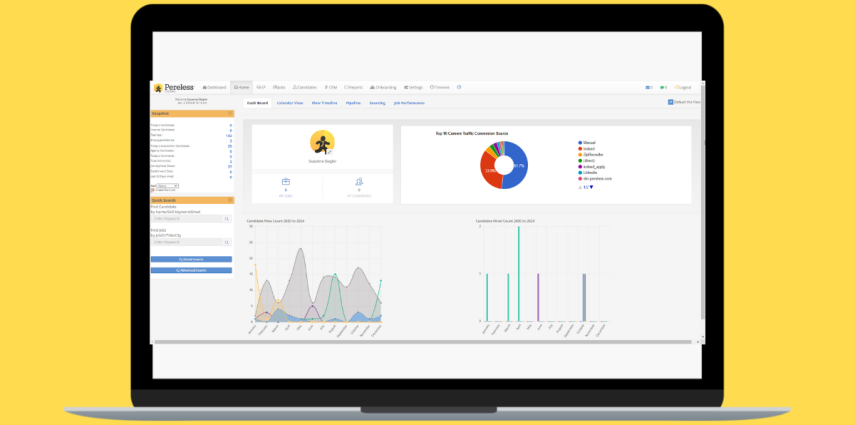In the fast-paced world of recruitment, finding the right candidates efficiently is essential for businesses looking to thrive. With the increasing demands of talent acquisition, traditional methods no longer suffice. Enter recruiting software, an innovative solution that streamlines the hiring process, ensuring that organizations can attract, assess, and onboard top talent with ease. Let’s dive into the key reasons why you need recruiting software, exploring features like electronic onboarding, text communication, seamless integrations, and the cost-effective benefits it brings to your hiring process.
-
Enhancing Efficiency with Electronic Onboarding
One of the most significant challenges in recruitment is transitioning a chosen candidate into a productive employee. Electronic onboarding simplifies this process by transforming complex paperwork into a streamlined digital experience. Candidates can easily complete necessary documentation online, reducing delays and freeing up your HR team’s time. With electronic onboarding, new hires can get up to speed more quickly, allowing them to engage with their roles sooner, ultimately benefiting your organization’s bottom line.
-
Improving Communication Through Text Communication
In our increasingly mobile world, traditional communication methods can leave candidates feeling disconnected. Recruiting software equipped with text communication features allows recruiters to engage with potential candidates quickly and efficiently. Text messages can serve as friendly reminders for interviews, send updates on the application status, or even conduct preliminary screening conversations. By utilizing text communication, you can meet candidates where they are, enhancing their experience and increasing your chances of securing the best talent.
-
Streamlined Processes with Seamless Integrations
No business operates in a vacuum, and neither should your recruitment efforts. Modern recruiting software offers seamless integrations with other vital business systems, such as HR management tools, payroll systems, and Applicant Tracking Systems (ATS). This ensures that data flows effortlessly between platforms, allowing your team to manage recruitment tasks more effectively. By integrating various processes, you minimize the likelihood of errors, reduce manual data entry, and create a more cohesive hiring strategy.
-
Cost-Effective Solutions That Save Time and Money
Investing in recruiting software may initially seem like an added expense, but it is, in fact, a cost-effective solution in the long run. By automating repetitive tasks like sorting resumes, scheduling interviews, and managing communication, recruiters can focus on what truly matters—building relationships with candidates. This increased efficiency not only saves time but also translates into significant cost savings for organizations. With the ability to quickly fill vacancies and reduce time-to-hire, companies can avoid the overhead costs associated with prolonged recruitment processes and employee vacancy.
*Recently, Pereless Systems launched their AI mascot named Bradford! Bradford has over 25 years of talent management experience. After every blog, Bradford will provide his expertise in the intricate world of talent management software like never before.*
What Would Bradford Do?

In today’s competitive landscape, leveraging recruiting software is no longer just an option; it’s a necessity. The advantages of electronic onboarding, effective text communication, seamless integrations, and significant cost savings cannot be overlooked. By investing in recruiting software, your organization will not only optimize the hiring process but will also better position itself to attract and retain the best talent available.
Make the shift today and see how recruiting software can transform your hiring experience into a more efficient, effective, and enjoyable process. It’s time to save time and money while revolutionizing your recruitment efforts for a brighter business future!


